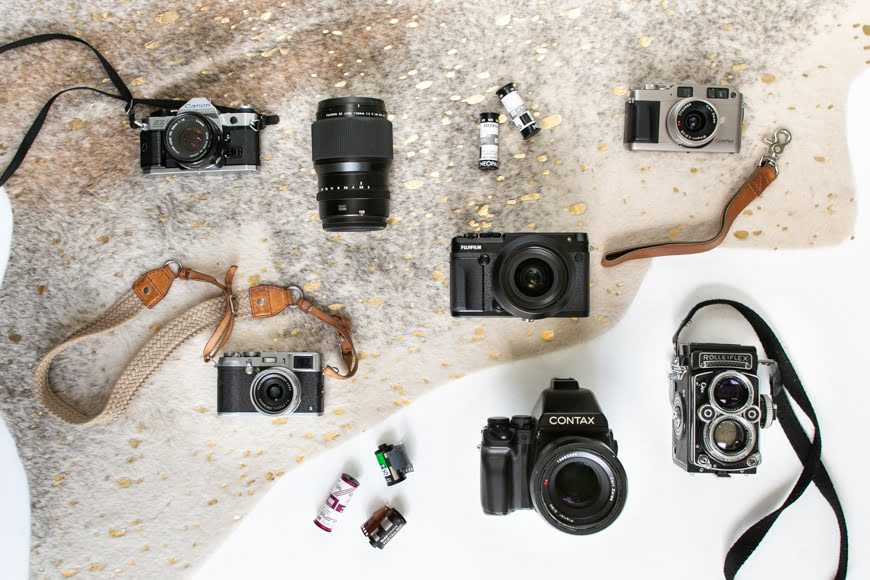Explore the evolution of photography from its origins in analog techniques to the modern digital era. Discover how innovations like the daguerreotype, film cameras, and digital sensors have transformed image capture, processing, and sharing. Understand the impact of these changes on photography as an art form and the future directions driven by emerging technologies.
The progression of photography, from analog to digital marks a change in how we capture, preserve and share visuals. This shift has brought about alterations in the realm of photography. It has also had an impact on societal and cultural interactions. To grasp this evolution one must delve into the advancement of technology, the switch from film to digital formats and the effects of these transformations on both the artistic side and the methodology of photography.
Early Days of Photography
The history of photography dates back, to the 1800s with Louis Daguerres invention of the daguerreotype in 1839. This early method utilized a copper plate coated in silver to capture images. The daguerreotype marked a milestone as it was the first process to produce lasting photographs albeit with a time consuming and chemically intensive procedure.
Subsequent to the daguerreotype various techniques emerged such, as the calotype process developed by William Henry Fox Talbot. In contrast to the daguerreotype, which yielded a single image the calotype produced images on paper enabling the creation of multiple prints. This advancement set the stage for modern photography methods.
The Rise of Film Photography
During the late 19th and early 20th centuries, the emergence of photography brought about a transformation in how images were captured and shared. In 1888, George Eastman launched the Kodak camera – a groundbreaking invention that made photography accessible to people. This camera utilized roll film simplifying the process of taking and developing photos. As a result, enthusiasts could easily explore this art form.
Throughout the century film photography continued to progress with advancements in technology, camera designs and photographic methods. The introduction of film in the 1930s added a dimension to photography allowing photographers to capture images in vibrant colors. Moreover the development of sophisticated cameras and lenses further improved the quality and versatility of photographs.
The Digital Revolution
The shift from photography to photography started in the 1990s and gained momentum in the 2000s. This transition revolutionized the way images are captured, processed and shared. The breakthrough in photography came with the invention of the sensor that replaced traditional film with electronic sensors capable of converting light into data.
One of the notable early digital cameras was the Kodak DCS 100, launched in 1991. Although it was bulky and pricey it signaled the onset of the era. In the following years, digital cameras became more budget friendly and compact making them accessible to a wider range of users. Advancements in imaging technology resulted in sensors enhanced image quality and features like focus and exposure control.
The influence of photography on the field has been significant. Digital cameras come with perks compared to traditional film cameras such as the option to quickly preview photos, remove unwanted ones and make real time adjustments. Digital images can be stored, edited and shared effortlessly leading to a engaging and versatile photography journey.
The Digital Photography Era
With the advent of smartphones boasting high quality cameras the realm of photography has undergone a transformation. For many individuals smartphones have emerged as the go to devices for capturing and sharing photos. The fusion of sophisticated image processing software and social media platforms has revolutionized the way images are disseminated and consumed. Social media has opened avenues, for photographers while also shaping trends in aesthetics and communication styles.
The widespread adoption of photography has spurred the progress of imaging technologies, like editing software enabling photographers to easily enhance and manipulate their visuals. Programs such, as Adobe Photoshop and Lightroom have become indispensable tools, for both hobbyist and professional photographers offering features for touch ups, color adjustments and imaginative editing.
The rise of photography thanks to technology has brought about changes in the world of art. It has opened up opportunities for individuals to get involved in photography and explore avenues for creativity. With the advent of tools and online platforms artists can now experiment with innovative styles like digital collages, photo editing and interactive multimedia ventures.
Challenges and Future Directions
Despite progress in photography there are still challenges and ongoing discussions in the industry. The widespread use of images has raised concerns about quality, authenticity and privacy. The ability to easily manipulate and share images brings up issues regarding the reliability of photographic records and the ethics surrounding digital alterations.
Looking ahead it seems that advancements are poised to continue influencing the development of photography. Technologies like intelligence, computational photography and virtual reality hold promise for further transforming the field. Tools powered by AI are already being utilized for tasks, like enhancing images and recognizing objects while computational photography methods are opening up avenues for capturing and processing images.
In summary the transition, from photography to digital showcases a remarkable progression in both technology and society. From the inception of the daguerreotype to the present day era of smartphones photography has seen significant changes. Each phase of this journey has presented challenges that have influenced how we capture, share and perceive visuals. With ongoing technological advancements photography is poised to evolve offering fresh avenues for creativity and visual storytelling.
